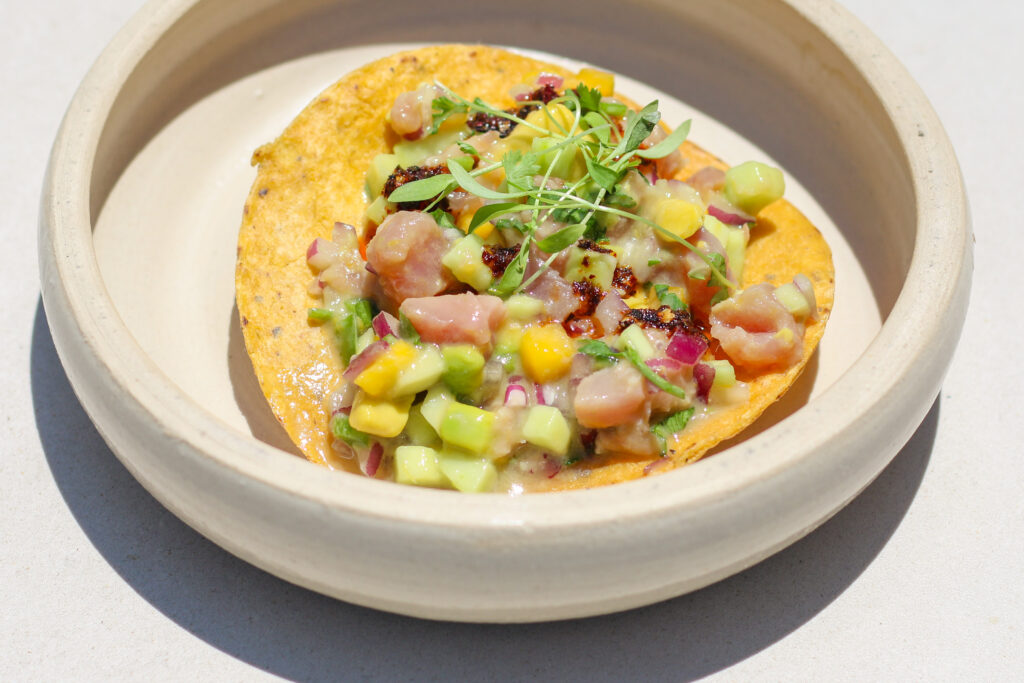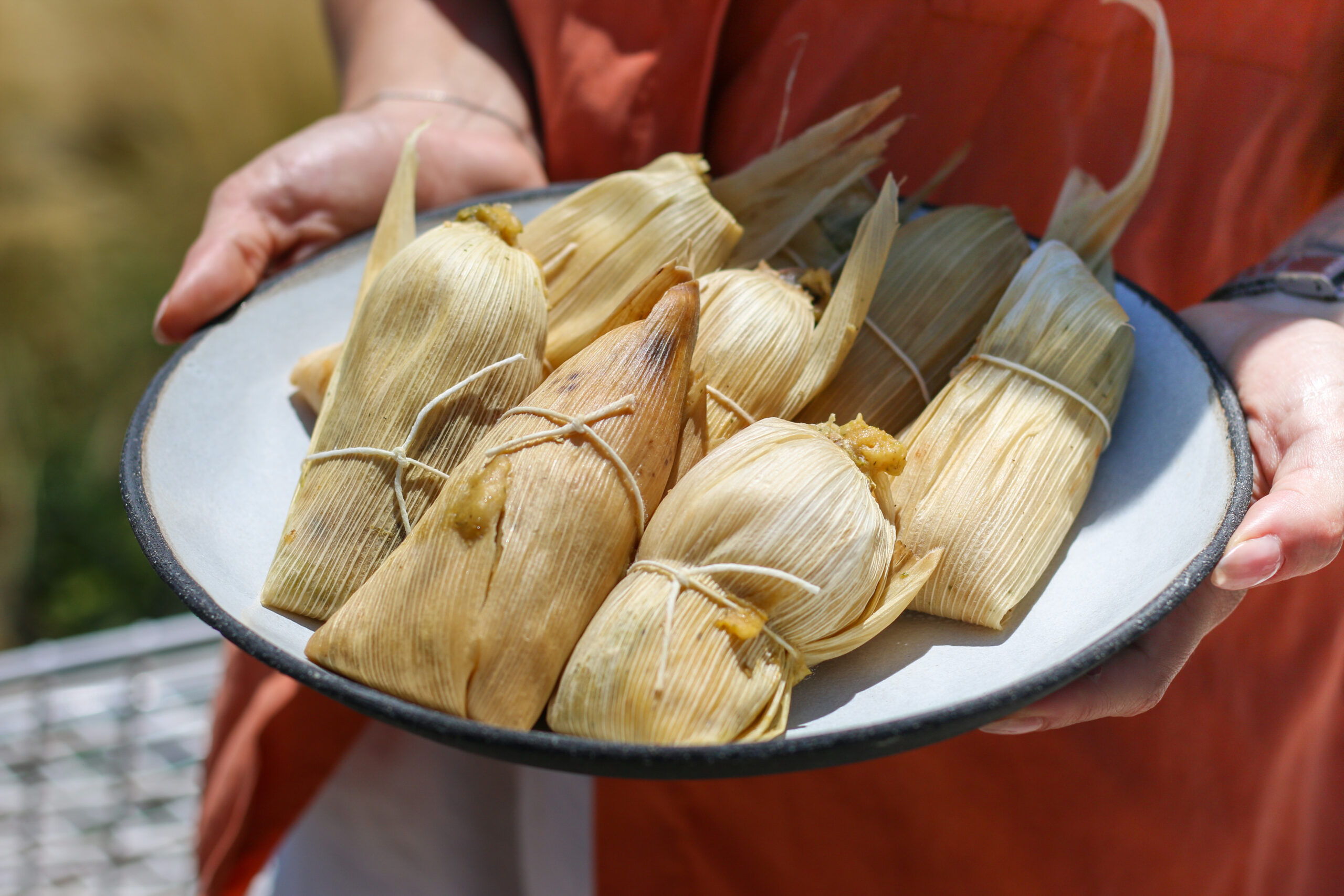Celebrated Mexican cookbook author and television host Pati Jinich sat down to talk with Israeli food personality Shaily Lipa before an audience at Asif of food professionals and passionate home cooks. The duo talked about food, family, cultural identity — and desert island foods. Check out five takeaways from their conversation below.

Following the conversation, Lipa noted: “The charming conversation with Pati reflected exactly the person she is and the food she cooks: intelligent, fluid, creative, colorful, interesting, and fun. Even her answer about the raw materials she would take to the desert island was a surprise. [And,] as a woman, I really liked the change she made in her career when she realized she was suffering at work…. It indicates courage and following the heart.”
Find Jinich’s most recent book, “Pati Jinich Treasures Of The Mexican Table: Classic Recipes, Local Secrets,” in the Asif library and her recipe for gefilte fish a la Veracruzana here.
On Food, Immigration, and Identity
Pati Jinich: As an immigrant, as a Jew, you are never enough of anything. In Mexico, I’m not Mexican, I’m Jewish. In America, I’m so Mexican. Being an “in between” is an ever-changing journey. It comes with tremendous responsibility to represent your different identities. But it also comes with incredible opportunity. I tell my kids we are triply blessed because we get to benefit from three cultures, three languages, three cuisines. Living in limbo, we may not feel sometimes we belong anywhere, but it also means we can go anywhere and be ourselves.

On the Commonality of Food
PJ: Food is the most noble place to share who you are. Every country has its divisions, every country is racist in its own way, with their own tones and their own ways of dividing people. Humans are flawed everywhere. But I feel like food has so much power to bring these walls down, giving people no option but to connect. Even if you have very different points of view, if you and I don’t see eye to eye politically, or whichever way, but I ask you about your grandmother’s soup, I’ve already created an opening, broken through that wall, unlocked that key. How can you not share your grandmother’s soup? Through food you connect to a different moral fiber that is like a common denominator.
Five Ingredients Pati Would Take to a Desert Island
- Chipotles in adobo: Made from ripe jalapeños that are dried in the sun, smoked, and then marinated in a sauce made from dried chilis, vinegar and spices, and preserved in small cans.
- Ripe avocados: I can’t live without avocado.
- Corn tortillas
- Eggs: I have them everyday.
- Schnitzel: In Mexico we call it “Milanesa.” I LOVE Milanesa. When my son went away to college I packed him big bags of homemade schnitzel.
On Culinary Traditions, Fusions, and Acknowledgment
PJ: There is this wave in Mexico of people saying we need to go to the roots, to the pre-conquest ingredients, to the authentic and true. Well, you can’t. Why would you want to go back to just eating grasshoppers? I see the beauty in honoring the ancient techniques and ingredients and everything. But the intermarriage of cuisines is also so beautiful.

A lot of people are very afraid of change. And fusion. And I really respect the cooks and places that can hold lines, preserving traditions and passing down the recipes that are in our DNA. But there should also be a path for learning from others, mixing techniques and foods. These days there is so much talk about cultural appropriation. Nothing makes me happier than seeing non Mexicans cooking Mexican food. As long as there’s due credit given, why can’t we enrich each other’s tables? I don’t see a future where there is a fusion of everything and you don’t know where things come from. I see a future when we really can appreciate each other’s food, where there is space to honor the classics, to know what cuisine is which and also enrich each other’s food.
On the Next Generation
PJ: My bubbe [from Poland] was such a Jewish grandmother. We ate a lot of meat. Tzimmes, p’tcha. But Mexico crept into her cooking. She would force us to choose between white and red gefilte fish à la Veracruzana (stewed with tomatoes and olives), and then no matter which you chose, she’d ask: “Why don’t you like the other one?” She started to put Mexican cinnamon and vanilla in her chocolate babka.
Today, my kids in Washington D.C. are so proud of being Mexican. They cook and eat differently. They combine a lot of Mexican flavors with what they find interesting. Lots of vegetarian food. They are much more conscious and concerned about sustainability and the environment. My kids come home and question why we are eating so much meat. So they are cooking more vegetables and foods from other cultures and cuisines. They love Middle Eastern and Asian foods, there are more international combinations at the table.
This conversation has been edited and condensed for clarity.



